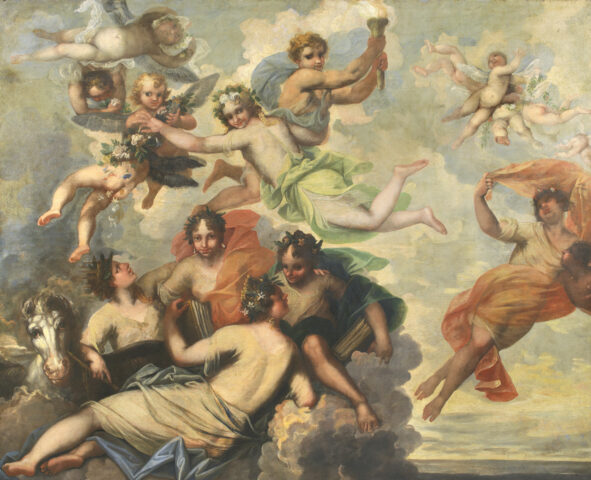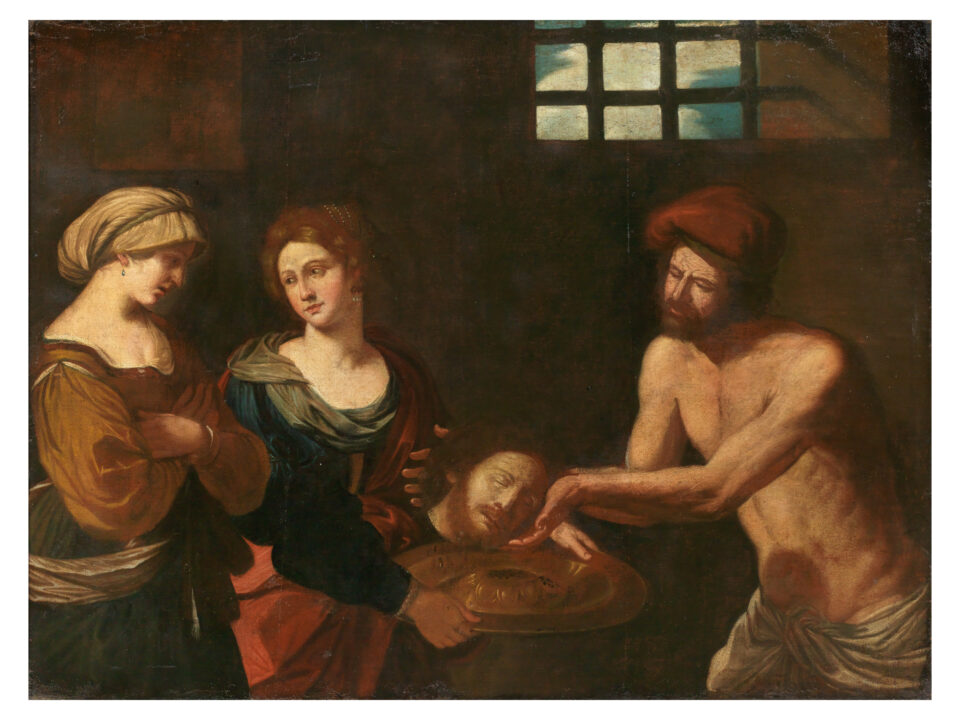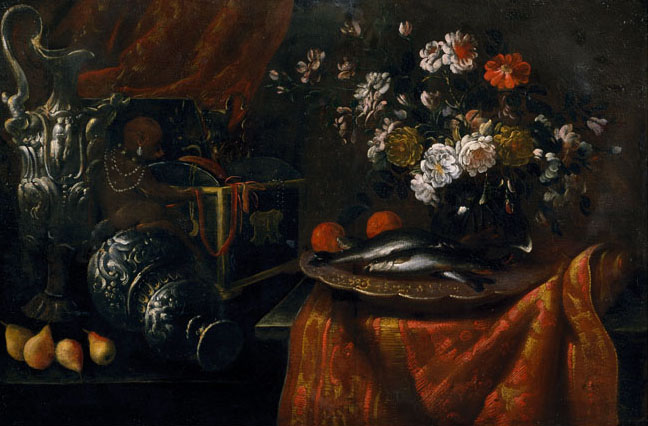PIETRO LIBERI
Padua, 1605 – Venice, 1687
The Muses with Pegasus on Mount Parnassus
oil on canvas, cm 229×285
This interesting painting features a cheerful image of the sky and clouds around the peak of Parnassus, which is populated by eight muses, various cherubs and Pegasus, the winged horse who symbolises Fame flying high in the sky. The canvas depicts the charming deities, daughters of Jupiter and the titaness Mnemosyne, who presided over artistic inspiration.
An analysis of the stylistic qualities of this large canvas points to the hand of a master of the Venetian school active in the 17th century, who drew reference from the great artists of the past (Michelangelo and Raphael) and the previous generation (Annibale Carracci and Pietro da Cortona). The author of this work was sensitive to the lighting experiments carried out in sculpture by Gian Lorenzo Bernini and to Veronese’s colourful accents, as well as being inspired by the classicism of Guido Reni. These qualities make it possible to recognise the artist as Pietro Liberi, a brilliant man of the world and skilled painter, a follower of Padovanino and certainly one of the finest artists working in the mid-17th century.
Liberi produced numerous secular paintings, which were highly sought-after and appreciated among collectors contemporary to him because of their elegantly sensual and erotic themes. With regard to the work in question, there are numerous similarities with other compositions by Liberi, especially Venus at her Bath (collection of Banco Ambrosiano Veneto). This painting shows clear stylistic similarities with our canvas depicting The Muses with Pegasus on Mount Parnassus, that is to say, a vaguely Emilian festive temperament brightened by neo-Veronese hues, which are recurring characteristics in Liberi’s finest pieces during the fertile years of his artistic maturity.





